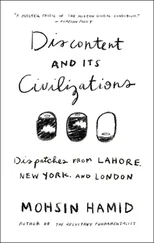Maud Goodwin - Dutch and English on the Hudson - A Chronicle of Colonial New York
Здесь есть возможность читать онлайн «Maud Goodwin - Dutch and English on the Hudson - A Chronicle of Colonial New York» — ознакомительный отрывок электронной книги совершенно бесплатно, а после прочтения отрывка купить полную версию. В некоторых случаях можно слушать аудио, скачать через торрент в формате fb2 и присутствует краткое содержание. Жанр: История, foreign_antique, foreign_prose, на английском языке. Описание произведения, (предисловие) а так же отзывы посетителей доступны на портале библиотеки ЛибКат.
- Название:Dutch and English on the Hudson: A Chronicle of Colonial New York
- Автор:
- Жанр:
- Год:неизвестен
- ISBN:нет данных
- Рейтинг книги:4 / 5. Голосов: 1
-
Избранное:Добавить в избранное
- Отзывы:
-
Ваша оценка:
- 80
- 1
- 2
- 3
- 4
- 5
Dutch and English on the Hudson: A Chronicle of Colonial New York: краткое содержание, описание и аннотация
Предлагаем к чтению аннотацию, описание, краткое содержание или предисловие (зависит от того, что написал сам автор книги «Dutch and English on the Hudson: A Chronicle of Colonial New York»). Если вы не нашли необходимую информацию о книге — напишите в комментариях, мы постараемся отыскать её.
Dutch and English on the Hudson: A Chronicle of Colonial New York — читать онлайн ознакомительный отрывок
Ниже представлен текст книги, разбитый по страницам. Система сохранения места последней прочитанной страницы, позволяет с удобством читать онлайн бесплатно книгу «Dutch and English on the Hudson: A Chronicle of Colonial New York», без необходимости каждый раз заново искать на чём Вы остановились. Поставьте закладку, и сможете в любой момент перейти на страницу, на которой закончили чтение.
Интервал:
Закладка:
Two years elapsed between the promulgation of the charter and the first active operations of the West India Company; but throughout this period the air was electric with plans for occupying and settling the new land beyond the sea. Finally in March, 1623, the ship Nieu Nederlandt sailed for the colony whose name it bore, under the command of Cornelis Jacobsen May, of Hoorn, the first Director-General. With him embarked some thirty families of Walloons, who were descendants of Protestant refugees from the southern provinces of the Netherlands, which, being in general attached to the Roman Catholic Church, had declined to join the confederation of northern provinces in 1579. Sturdy and industrious artisans of vigorous Protestant stock, the Walloons were a valuable element in the colonization of New Nether land. After a two months' voyage the ship Nieu Nederlandt reached the mouth of the Hudson, then called the Mauritius in honor of the Stadholder, Prince Maurice, and the leaders began at once to distribute settlers with a view to covering as much country as was defensible. Some were left in Manhattan, several families were sent to the South River, now the Delaware, others to Fresh River, later called the Connecticut, and others to the western shore of Long Island. The remaining colonists, led by Adriaen Joris, voyaged up the length of the Mauritius, landed at Fort Orange, and made their home there. Thus the era of settlement as distinguished from trade had begun.
The description of the first settlers at Wiltwyck, on the western shore of the great river, may be applied to all the pioneer Dutch colonists. "Most of them could neither read nor write. They were a wild, uncouth, rough, and most of the time a drunken crowd. They lived in small log huts, thatched with straw. They wore rough clothes, and in the winter were dressed in skins. They subsisted on a little corn, game, and fish. They were afraid of neither man, God, nor the Devil. They were laying deep the foundation of the Empire State." 2 2 See the monograph by Augustus H. Van Buren in the Proceedings of the New York Historical Society , vol. xi, p. 133.
The costume of the wife of a typical settler usually consisted of a single garment, reaching from neck to ankles. In the summer time she went bareheaded and barefooted. She was rough, coarse, ignorant, uncultivated. She helped her husband to build their log hut, to plant his grain, and to gather his crops. If Indians appeared in her husband's absence, she grasped the rifle, gathered her children about her, and with a dauntless courage defended them even unto death. This may not be a romantic presentation of the forefathers and foremothers of the State, but it bears the marks of truth and shows us a stalwart race strong to hold their own in the struggle for existence and in the establishment of a permanent community.
From the time of the founding of settlements, outward-bound ships from the Netherlands brought supplies for the colonists and carried back cargoes of furs, tobacco, and maize. In April, 1625, there was shipped to the new settlements a valuable load made up of one hundred and three head of live stock – stallions, mares, bulls, and cows – besides hogs and sheep, all distributed in two ships with a third vessel as convoy. The chronicler, Nicholaes Janszoon Van Wassenaer, gives a detailed account of their disposal which illustrates the traditional Dutch orderliness and cleanliness. He tells us that each animal had its own stall, and that the floor of each stall was covered with three feet of sand, which served as ballast for the ship. Each animal also had its respective servant, who knew what his reward was to be if he delivered his charge alive. Beneath the cattle-deck were stowed three hundred tuns of fresh water, which was pumped up for the live stock. In addition to the load of cattle, the ship carried agricultural implements and "all furniture proper for the dairy," as well as a number of settlers.
The year 1625 marked an important event, the birth of a little daughter in the household of Jan Joris Rapaelje, the "first-born Christian daughter in New Netherland." Her advent was followed by the appearance of a steadily increasing group of native citizens, and Dutch cradles multiplied in the cabins of the various settlements from Fort Orange to New Amsterdam. The latter place was established as a fortified post and the seat of government for the colony in 1626 by Peter Minuit, the third Director-General, who in this year purchased Manhattan Island from the Indians.
The colony was now thriving, with the whole settlement "bravely advanced" and grain growing as high as a man. But across this bright picture fell the dark shadow of negro slavery, which, it is said, the Dutch were the first to introduce upon the mainland of North America in 1625 or 1626. Among the first slaves were Simon Congo, Anthony Portuguese, John Francisco, Paul d'Angola – names evidently drawn from their native countries – and seven others. Two years later came three slave women. In a letter dated August 11, 1628, and addressed to his "Kind Friend and Well Beloved Brother in Christ the Reverend, learned and pious Mr. Adrianus Smoutius," we learn with regret that Domine Michaelius, having two small motherless daughters, finds himself much hindered and distressed because he can find no competent maid servants "and the Angola slave women are thievish, lazy, and useless trash." Let us leave it to those who have the heart and the nerves to dwell upon the horrors of the middle passage and the sufferings of the poor negroes as set down in the log-books of the slavers, the St. John and the Arms of Amsterdam . It is comforting to the more soft-hearted of us to feel that after reaching the shores of New Netherland, the blacks were treated in the main with humanity. The negro slave was of course a chattel, but his fate was not without hope. Several negroes with their wives were manumitted on the ground of long and faithful service. They received a grant of land; but they were obliged to pay for it annually twenty-two and a half bushels of corn, wheat, pease, or beans, and a hog worth eight dollars in modern currency. If they failed in this payment they lost their recently acquired liberty and returned to the status of slaves. Meanwhile, their children, already born or yet to be born, remained under obligation to serve the Company.
Apparently the Dutch were conscious of no sense of wrong-doing in the importation of the blacks. A chief justice of the King's Bench in England expressed the opinion that it was right that pagans should be slaves to Christians, because the former were bondsmen of Satan while the latter were servants of God. Even this casuist, however, found difficulty in explaining why it was just that one born of free and Christian parents should remain enslaved. But granting that the problems which the settlers were creating in these early days were bound to cause much trouble later both to themselves and to the whole country, there is no doubt that slave labor contributed to the advancement of agriculture and the other enterprises of the colony. Free labor was scarce and expensive, owing both to the cost of importing it from Europe and to the allurements of the fur trade, which drew off the boer-knecht from farming. Slave labor was therefore of the highest value in exploiting the resources of the new country.
These resources were indeed abundant. The climate was temperate, with a long season of crops and harvests. Grape-vines produced an abundant supply of wines. The forests contained a vast variety of animals. Innumerable birds made the wilderness vocal. Turkeys and wild fowl offered a variety of food. The rivers produced fish of every kind and oysters which the letters of the colonists describe as a foot long, though this is somewhat staggering to the credulity of a later age. De Vries, one of the patroons, or proprietors, whose imagination was certainly of a lively type, tells us that he had seen a New Netherlander kill eighty-four thrushes or maize-birds at one shot. He adds that he has noticed crabs of excellent flavor on the flat shores of the bay. "Their claws," he says naïvely, "are of the color of our Prince's flag, orange, white and blue, so that the crabs show clearly enough that we ought to people the country and that it belongs to us." When the very crabs thus beckoned to empire, how could the Netherlander fail to respond to their invitation?
Читать дальшеИнтервал:
Закладка:
Похожие книги на «Dutch and English on the Hudson: A Chronicle of Colonial New York»
Представляем Вашему вниманию похожие книги на «Dutch and English on the Hudson: A Chronicle of Colonial New York» списком для выбора. Мы отобрали схожую по названию и смыслу литературу в надежде предоставить читателям больше вариантов отыскать новые, интересные, ещё непрочитанные произведения.
Обсуждение, отзывы о книге «Dutch and English on the Hudson: A Chronicle of Colonial New York» и просто собственные мнения читателей. Оставьте ваши комментарии, напишите, что Вы думаете о произведении, его смысле или главных героях. Укажите что конкретно понравилось, а что нет, и почему Вы так считаете.












